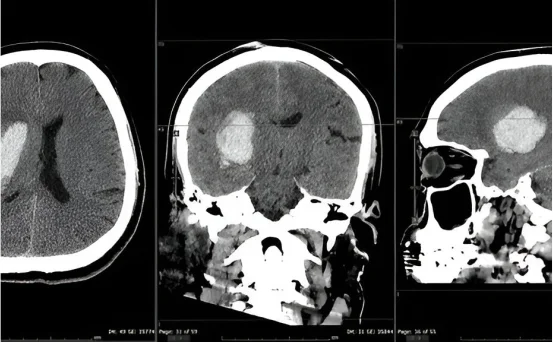Allergic rhinitis is one of the most common chronic conditions affecting people of all age groups across the world. Often mistaken for a common cold, it is characterized by symptoms like sneezing, nasal congestion, runny nose, and itchy eyes. These symptoms result from an allergic reaction when the body’s immune system overreacts to allergens such as pollen, dust mites, mold, pet dander, or other environmental triggers.
While the condition itself is not life-threatening, it can significantly affect the quality of life, productivity, and sleep. Accurate diagnosis is essential for effective treatment and long-term management. Let’s delve into how allergic rhinitis is diagnosed by healthcare professionals.
Understanding before Diagnosis of Allergic Rhinitis
Before jumping into the diagnostic process, it’s important to understand the two types of allergic rhinitis:
-
Seasonal Allergic Rhinitis (SAR) :- Often triggered by outdoor allergens like pollen from trees, grasses, or weeds. It typically occurs during spring or fall.
-
Perennial Allergic Rhinitis (PAR) :- Caused by indoor allergens such as dust mites, pet dander, and mold. Symptoms may persist year-round.
Both types share similar symptoms, which is why proper diagnosis is key to distinguishing allergic rhinitis from other conditions like sinus infections, viral rhinitis, or non-allergic rhinitis.
Initial Clinical Evaluation
The first step in diagnosing allergic rhinitis is a thorough clinical evaluation. This involves a detailed medical history and a physical examination by a healthcare provider.
-
Patient History
A comprehensive history helps uncover patterns that point toward allergic rhinitis. The doctor may ask about:
-
Symptom Onset :- When the symptoms started and how long they last.
-
Frequency and Seasonality :- Whether symptoms are seasonal or persist throughout the year.
-
Triggers :- Any known exposure to allergens such as pets, dust, pollen, or mold.
-
Family History :- Allergies often run in families, so any family history of allergic conditions is noted.
-
Lifestyle and Environment :- Information about the home, workplace, presence of pets, carpeting, or ventilation helps identify potential allergen sources.
-
Other Health Conditions :- Allergic rhinitis often coexists with asthma, eczema, or sinusitis. These conditions may support the allergic diagnosis.
-
-
Physical Examination
A physical exam typically focuses on the nose, throat, ears, and eyes. The following signs may be observed:
-
Swollen nasal passages or pale bluish mucosa
-
Clear nasal discharge
-
Dark circles under the eyes (allergic shiners)
-
Crease on the nose from frequent rubbing (allergic salute)
-
Watery or red eyes
-
Mouth breathing or signs of postnasal drip
Though physical signs alone aren’t conclusive, they reinforce the suspicion of allergic rhinitis.
-
Diagnostic Tests for Confirmation
When the clinical evaluation strongly suggests allergic rhinitis, doctors may recommend specific tests to confirm the diagnosis and identify the triggering allergens. These tests are especially helpful in guiding long-term treatment and allergen avoidance strategies.
-
Skin Prick Test (SPT) :- The skin prick test is one of the most widely used diagnostic tools for allergic rhinitis. It involves pricking the skin (usually on the forearm or back) with tiny amounts of common allergens.
-
Procedure :- A drop of allergen extract is placed on the skin. A small lancet is used to prick the surface so the allergen can enter the skin.
-
Results :- If the person is allergic, a small red bump or wheal will develop at the test site within 15-20 minutes.
-
Advantages :- Fast, inexpensive, and highly sensitive.
-
Limitations :- May not be suitable for people with severe skin conditions, or those who cannot discontinue antihistamines before the test.
-
-
Specific IgE Blood Test (RAST or ImmunoCAP)
When skin testing is not feasible, a blood test is performed to detect allergen-specific Immunoglobulin E (IgE) antibodies.
-
Procedure :- A blood sample is drawn and tested for IgE antibodies against suspected allergens.
-
Results :- A higher level of specific IgE indicates a sensitization to that allergen.
-
Advantages :- Can be done regardless of skin condition or antihistamine use.
-
Limitations :- More expensive and slightly less sensitive than skin testing.
-
-
Nasal Smear or Cytology :- In some cases, a nasal smear may be done to examine the type of cells present in nasal secretions.
-
Findings :- An increased number of eosinophils (a type of white blood cell) suggests an allergic cause.
-
Usefulness :- This test is more supportive than diagnostic but may help differentiate between allergic and non-allergic rhinitis.
-
- Imaging Studies (If Needed) :- Although not routine, imaging tests such as a sinus X-ray or CT scan might be used in chronic cases or when sinusitis is suspected.
-
Use Case :- To rule out structural abnormalities or chronic sinus infections contributing to nasal symptoms.
-
Differential Diagnosis
Diagnosing allergic rhinitis accurately also involves ruling out other conditions with similar symptoms. These include:
-
Common Cold :-Caused by viruses, usually resolves within 7–10 days.
-
Non-Allergic Rhinitis :- Triggered by irritants like smoke, weather changes, or strong odors.
-
Sinusitis :- May cause facial pain, fever, and thick yellow-green nasal discharge.
-
Nasal Polyps or Deviated Septum :- Can lead to chronic nasal obstruction without typical allergy symptoms.
Identifying the exact cause of rhinitis ensures that unnecessary medications are avoided and treatment is tailored specifically.
Importance of Early and Accurate Diagnosis
Misdiagnosing allergic rhinitis can lead to years of ineffective treatment and worsening symptoms. When properly diagnosed, patients can benefit from:
-
Allergen avoidance strategies
-
Targeted medical treatment (like antihistamines or nasal corticosteroids)
-
Immunotherapy for long-term relief
Early diagnosis is especially critical in children, as untreated allergic rhinitis can affect concentration, school performance, and lead to complications like ear infections or asthma.
Conclusion
Allergic rhinitis is a manageable condition but only when correctly diagnosed. A detailed history, physical examination, and relevant allergy testing are the cornerstones of diagnosis. While the symptoms can mimic other conditions, a skilled healthcare provider can differentiate them and guide you on the right path.
Whether it’s seasonal pollen or everyday household dust, identifying the underlying trigger allows for better symptom control and an improved quality of life. If you or someone in your family experiences recurring nasal symptoms, don’t dismiss them as “just allergies” consult a specialist to explore a precise diagnosis and tailored treatment plan.























